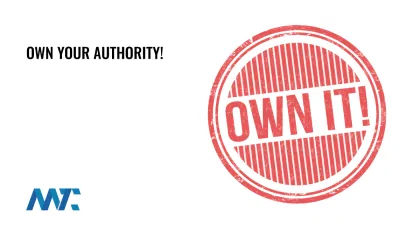
Companies often write content on other domains due to the popularity and reach of these external publications or social media platforms. This strategy can significantly enhance a brand’s visibility, tapping into the established audience of these platforms. And, of course, it can also considerably improve the other domain’s visibility and drive rank and authority to their brand.
An example I often provide is my work on the Forbes Agency Council. It’s been a fantastic way to get my writing and name out to a broader audience than Martech Zone. Even though Forbes produces it, it’s not without risk, though. What happens if the platform is discontinued? What happens if their brand is mired in some controversy? What happens if other authors are added to the site I don’t wish to be associated with?
On Martech Zone, we have authors from all over the web who wish to reach our audience. I appreciate the content because it provides diversity beyond my work and focus. And they appreciate the opportunity to reach my audience and drive some back to their products and services. I think it’s a win-win, but I’d never advise anyone to write only on Martech Zone without investing in their domain.
Writing on another domain for your brand is a viable strategy, but there are hazards and best practices to consider.
Why Companies Write on Other Domains
- Leveraging Established Audiences: Popular publications and social media platforms have large, engaged audiences. By posting content here, companies can reach a broader audience than they might on their platforms.
- Building Brand Awareness: Writing on well-known domains can increase brand exposure and credibility, as these platforms are often seen as authoritative.
- Organic Search Benefits: Backlinks from high-authority domains can improve a company’s SEO efforts and search engine ranking, driving more organic traffic to their site.
- Networking Opportunities: Collaborating with popular domains can open doors to new business relationships and collaborations.
Hazards of Writing on External Domains
- Limited Control: Companies have less control over their content on external platforms, including how it’s presented and preserved.
- Risks to Brand Reputation: An association with a platform that doesn’t align with the company’s values or brand image can negatively impact reputation.
- SEO Risks: The external domain may receive the SEO benefits of the content, rather than the company’s own site.
- Dependency on Third Parties: Changes in the external domain’s policies or popularity can affect the content’s impact.
Opportunities and Best Practices
- Linking Back to Your Brand: Include a link to your company’s website or a specific call-to-action. This can direct traffic from the external domain to your site, enhancing lead generation and conversion opportunities.
- Content Alignment: Ensure the content aligns with the external domain’s audience and your brand’s values and messaging.
- Quality and Relevance: High-quality, relevant content will likely engage readers and reflect positively on your brand.
- Monitoring and Engagement: Monitor the content for engagement and feedback, responding to comments and interactions to build a community around your brand.
Writing content on external domains is a powerful strategy for expanding reach and building brand awareness, especially when leveraging the popularity of these platforms.
How I Mitigate The Risk Of Losing That Content
One of the best practices I’d recommend when you invest the time and effort to write for another platform is ensuring you have a copy. There are a couple of ways that you can do this:
- Backup – Store a document with the article where you can retrieve it if the site goes out of business or decides to remove your content. At that point, you may publish it on your site (as long as you’re legally the owner).
- Canonical – Publish the content on your site simultaneously, utilizing a canonical link to provide the originating domain with the search engine optimization credit.
The primary role of canonical tags in this scenario is to guide search engines in understanding which version of the content is preferred or more authoritative. This is especially useful when distributing content across multiple platforms to maximize reach.
If the content on the external domain is lost or removed, the company can remove the canonical tag on its site. By doing so, they signal to search engines that their version is now the primary source, ensuring it remains visible and indexable.